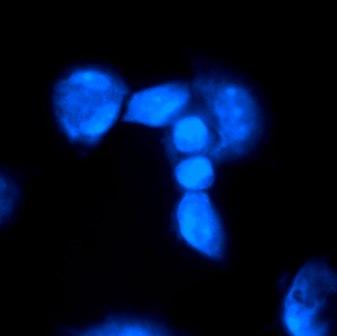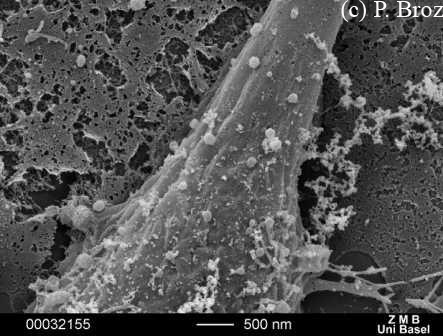National Centre of Competence in Nanoscale Science, University of Basel
Information on Nanomedicine |
||
Scanning electron microscopy picture of a cell extension with bound polymeric nanocontainers (small round balls on the cell surface) |
What is Nanomedicine? | |
Nanomedicine is the medical discipline that investigates the use of nanotechnological devices in medicine. Nanomedicine has a high grade of interdisciplinarity, because a successful application of nanotechnology to medicine is only feasible when physicists, chemists, physicians and other specialists work together for the benefit of the project. Nanomedicine is a very young discipline, but will introduce many revolutionary diagnostic and therapeutic tools to medicine in the next years. Nanostructures used in nanomedicine have a typical size of 100-200 nm (1 nanometer = 0.001 micrometer = 0.000001 millimeter = 0.000000001 meter) and cannot be seen by eye or even light microscopy. Only with an electron microscope or more specialized devices such as the scanning tunneling microscope or the atomic force microscope is it possible to visualize nanometer-sized structures. |
||
| What are Nanomedicine researchers trying to develop? |
|
All over the world, research groups are currently engaged in various nanomedical projects. Many different nanostructures such as nanotubes, fullerenes, quantum dots, nanofibers, nanobeads, micelles, liposomes or nanocontainers have been developed by physicists and chemists in the past years for different purposes. Nanomedicine tries to use some of this nanostructures (also called nanoparticles) for diagnostic or therapeutic applications in all fields of medicine. Current research projects with a promising future are:
Other research projects and success stories in the field of nanomedicine can be found in our "Contact and Links" section.
|
 Fluorescence microscopy picture of cultured human macrophages |


